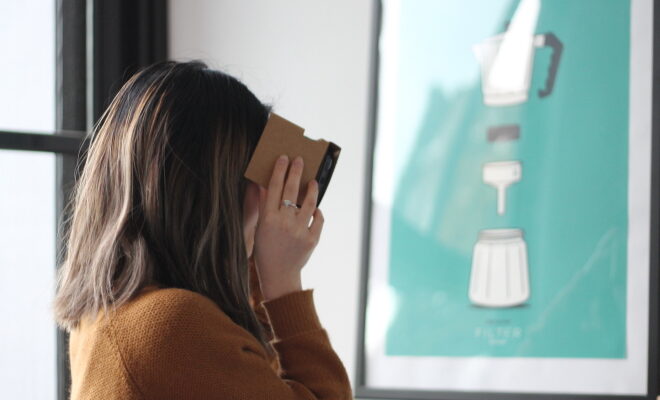
Health x Wellness
How can virtual rehabilitation services assist patients?
Virtual Rehabilitation can be used as an enhancement to conventional therapy for patients.
Based on research, virtual rehabilitation can offer a number of advantages over traditional therapies, such as “…the ability to engage individuals in the simulated practice of functional tasks at higher doses, automated assessment of performance over time, flexibility in the scaling of task constraints, and a variety of reward structures to help maintain compliance.”
During the current pandemic, hospitals and healthcare sectors are facing challenges, especially around supporting physically challenged individuals and patients. Although mobility and movement are problems faced by patients prior to the pandemic, social distancing measures and restrictions imposed have exacerbated these problems.
Organisations are looking towards technology and digitalisation to continue offering rehabilitation services.
Marian Tan, Rehabilitation Manager, Abilities Beyond Limitations and Expectations Ltd (ABLE), a non-profit organisation that supports persons with disabilities and their caregivers shares their perspective about the shift to virtual rehabilitation methods.
the Active Age (AA): How has the COVID-19 pandemic affected physically challenged patients and caregivers?
Marian Tan (MT): The COVID-19 pandemic has certainly caused disruptions to the clients’ therapy sessions where some had to be cancelled or taken online. Our clients are also more vulnerable to the virus and would need to take extra precautions when going out. In conjunction with safe management measures, the availability of slots for centre-based rehabilitation was reduced. Their caregivers also feel worried for their loved ones’ recovery journey. Slower rehab progress increases their caregiving burden, resulting in burnout and anxiety.
AA: How did ABLE address the challenges faced by patients and caregivers?
MT: ABLE addressed these immediate challenges by introducing rehab over video-conferencing services during the circuit breaker. Social workers regularly checked in with clients and their caregivers with regards to their mental health. Although ABLE reopened its centre-based rehab, we continued rehab over video-conferencing services to mitigate the reduction of onsite therapy slots due to safe management measures.
AA: Will virtual rehabilitation be replacing face-to-face rehabilitation sessions in the near future?
MT: Virtual rehabilitation will not replace actual rehabilitation sessions.
During these uncertain times where social distancing regulations are imposed, the Jintronix Rehabilitation System (JRS) is an additional feature to help clients with rehabilitation services at home.
Currently, in Singapore rehab centres, the system is used as an add-on activity for centre-based rehab only. Although ABLE is not the first to implement this system, we are the first centre to provide a subsidised home-based programme for clients.
AA: What are some case stories of patients adopting virtual rehabilitation?
MT: At present, ABLE has used the JRS at home for two clients, one of which has been successfully discharged. Both clients have experienced significant functional gains. We are raising awareness of this home-based programme because we believe that it is beneficial for the client’s recovery.
AA: Does ABLE have any data/studies/surveys to reference supporting the shift to virtual rehabilitation?
MT: There are ongoing studies which show that virtual rehabilitation is beneficial for clients. Virtual rehabilitation is split into different groups – video-conferencing, gamified technology, and immersive technology.
Video-conferencing is limited to consultations, and results are based on observation and client feedback.

Gamification technology uses sensors to track clients’ progress, therefore allowing therapists to have qualitative data of client performance. Less frequent consultation is needed compared to video-conferencing, as results are easily tracked.
Immersive technology encompasses tools which merge the physical world with a digital or simulated reality. However, clinical effectiveness of each tool is not consistent, and accessibility is varied. This is because, like gamification technology, it was created for entertainment purposes before being incorporated into therapy.
One such gamified tool is JRS. Together with Wealth Springs Holdings, ABLE deployed JRS, a platform capable of fun and intensive rehabilitation. It combines traditional movements and exercises used in rehabilitation with virtual games and motion sensing cameras, making physical therapy more engaging. JRS targets neurological and orthopedic conditions and can be used every day and at any time, further increasing patient convenience and access. JRS uses a body free 3D camera and does not record videos or require face-to-face consultations.
AA: In the future when virtual rehabilitation is more common, what role does ABLE see for onsite/face to face rehabilitation?
MT: Face-to-face rehabilitation will compliment virtual rehabilitation as it is still vital to assess the severity of the client’s condition. Therapists can also use the onsite sessions to prescribe a suitable treatment plan and to evaluate changes to the prescription.
Photo by visuals on Unsplash Photo by Matthew Kwong on Unsplash






